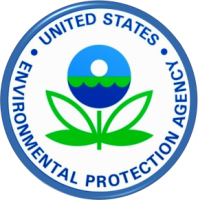U S Environmental Protection Agency (EPA) finalise safeguards to promote responsible recycling of hazardous secondary materials.
S Environmental Protection Agency (EPA) finalise safeguards to promote responsible recycling of hazardous secondary materials.
SCV News reported on the EPA’s new safeguards that will “demonstrate a significant step in promoting recycling innovation”, with the new Definition of Solid Waste (DSW) final rule issued by the agency helping to promote safe recycling of hazardous secondary materials and conserve resources, as well as bringing economic benefits.
The new final rule “modifies the EPA’s 2008 DSW rule to protect human health and the environment from the mismanagement of hazardous secondary material”, and also promotes “sustainability through the encouragement of safe and environmentally responsible recycling of such materials”.
It was developed by the EPA after it “conducted a rigorous environmental justice analysis” of the DSW rule, examining “the location of recycling facilities and their proximity to adjacent residents”; as well as a “broad public engagement and expert peer review process”. Following the analysis, it was found that there were “significant regulatory gaps in the 2008 rule” which threatened to “negatively impact communities adjacent to third party recyclers, including disproportionately impacting minority and low-income populations”.
As a result, the new rule requires “off-site recycling at a facility with a RCRA permit or verified recycler variance” that allows “EPA and the states to verify that a facility has the equipment and trained personnel to safely manage the material” and that it has “adequate financial assurance, is prepared to respond in case of an emergency, and can demonstrate that the recycling is not disposal in the guise of recycling”. Communities nearby will also have to be “notified prior to the start of recycling operations”.
The final rule also revises the definition of “legitimate recycling”, reaffirming the “legitimacy of in-process recycling and of commodity-grade recycled products”. However, it keeps the “Exclusion for recycling under the control of the generator, including recycling onsite, within the same company, and through certain types of toll manufacturing agreements”, recognising those who “follow good business practices by taking responsibility for their recycling and maintaining control of their hazardous secondary materials”.
Also included in the new rule is “a targeted remanufacturing exclusion for certain higher-value hazardous spent solvents, which are being remanufactured into commercial-grade products”, as this “allows manufacturers to reduce the use of virgin solvents, resulting in both economic and environmental benefits, including energy conservation and reduced greenhouse gas emissions”.
Commenting on the new safeguards, Mathy Stanislaus, Assistant Administrator for EPA’s Office of Solid Waste and Emergency Response, said: “Americans do not have to choose between a clean environment and economic prosperity. This important rule gives communities a voice in the decisions that impact them, promotes safe and responsible recycling of hazardous secondary materials and conserves vital resources, while protecting those most at risk from the dangers of hazardous secondary materials mismanagement. This innovative rule demonstrates that protecting communities and leveraging economic advantages for sustainable recycling and materials manufacturing can go hand-in-hand.”
